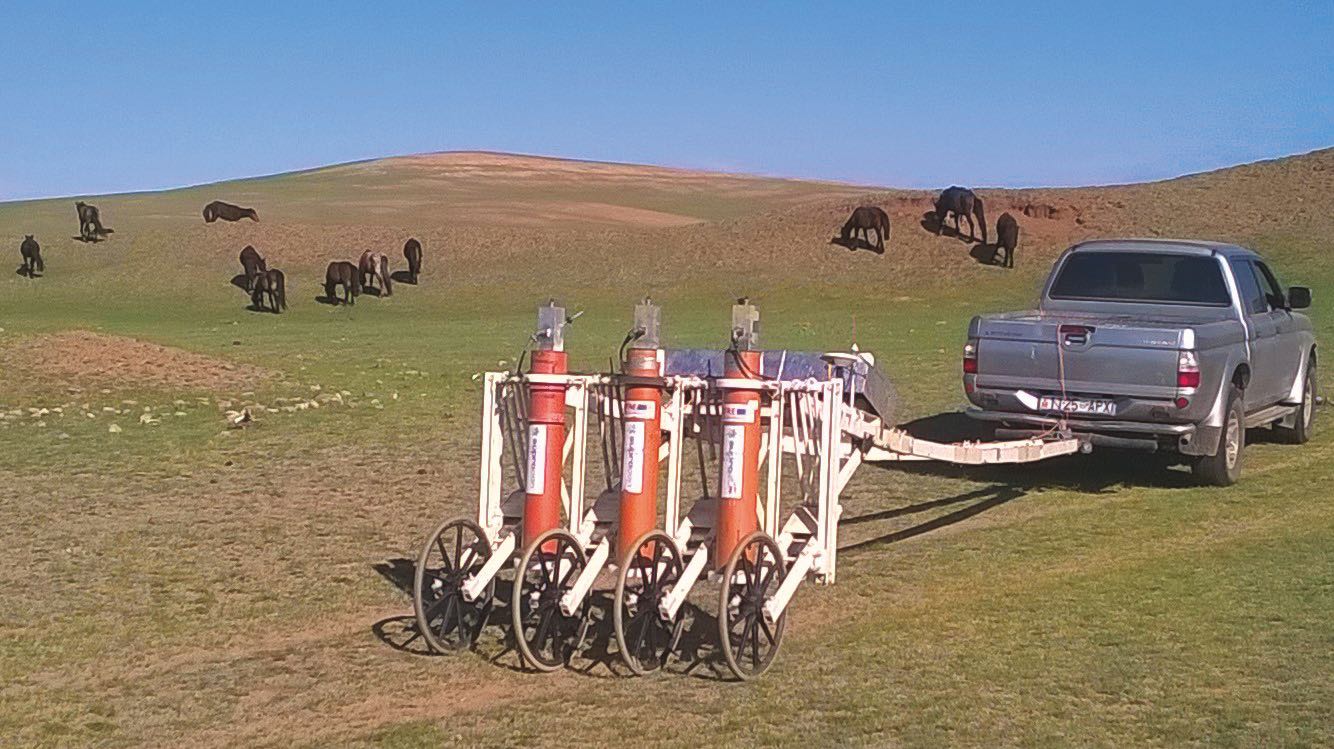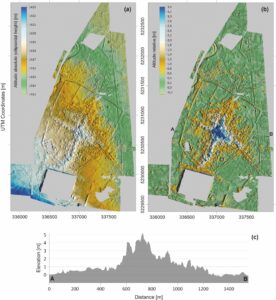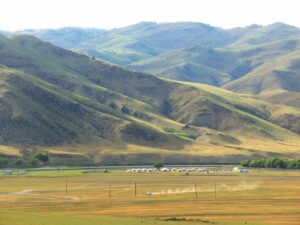- Home
- Research
- Quantum Systems
- Research results
- On the trail of Mongolian rulers with magnetic field sensors
On the trail of Mongolian rulers with magnetic field sensors

13.12.2022
Hidden under steppe and farmland in the Orkhon Valley of central Mongolia lies the 800-year-old ancient capital of Karakorum, center of the former Mongolian Empire and now a UNESCO World Heritage Site. Researchers from Jena and Bonn have surveyed the city and the surrounding terrain and discovered that the former metropolis was significantly larger than previously thought.
Using a jeep, the researchers dragged their measurement system of magnetic field sensors – called SQUID (superconducting quantum interference detectors) – and a differential GPS system over an area of more than 650 soccer fields to map the remains of the ancient city. The system measures minimum changes in the Earth’s magnetic field with very high resolution and, through this non-destructive geomagnetic scanning, can survey in great detail anthropogenic ground structures that are not visible above ground.
Dr. Sven Linzen, Dr. Ronny Stolz and the team from the Quantum Systems Department, together with colleagues from the Institute of Archaeology and Cultural Anthropology at the University of Bonn, were thus able for the first time to create a comprehensive geomagnetic and topographic survey plan for this area. From this, they gained insights into how the city was structured, how it developed, and which traffic routes and trade routes led to it.
During the expeditions to central Mongolia, the researchers had to overcome several challenges: The measurement system had to be transported overland to Asia due to installed lithium batteries, and the scientists were accommodated in yurt tent camps without a stable power supply. The expedition team as well as the sensor technology had to withstand air temperature fluctuations from -5 to up to 40 degrees centigrade. Sven Linzen is proud of the team’s success: “For measurements and interpretation of the large amounts of data, physics and archaeology have to work closely together.” The successful cooperation was rewarded in 2021 by an accentuation of the published research results as a “Research Highlight” in the journal Nature.
SQUID: Versatile
Research on SQUID in Jena dates back to 1968. Initially, the hair-thin structures of SQUID were scratched by hand under a microscope. Today, SQUID with structures in the nanometer range can be produced in the clean room using thin-film and lithog raphy techniques. They are among the most sensitive in the world and enable magnetic field measurements with low noise and very high magnetic field resolution. SQUID from Leibniz IPHT are used in many applications – on earth, in the air and also under water. For example, to detect magnetic anomalies in the earth’s crust, to search for mineral deposits or geothermal potentials, or to identify contaminated sites, old ammunition and unexploded ordnance device in the ground.
Together with Supracon, a company founded in 2001, Ronny Stolz’s team is working on commercializing such systems, for example for building ground investigation. “Through the cooperation with Supracon, our sensor technology is being used across the board. This is a good example of the successful transfer of scientific findings into practice. In research, we are currently working on further developing our measuring system with the aid of optical magnetic field sensors,” says the head of the research department, giving an outlook.


